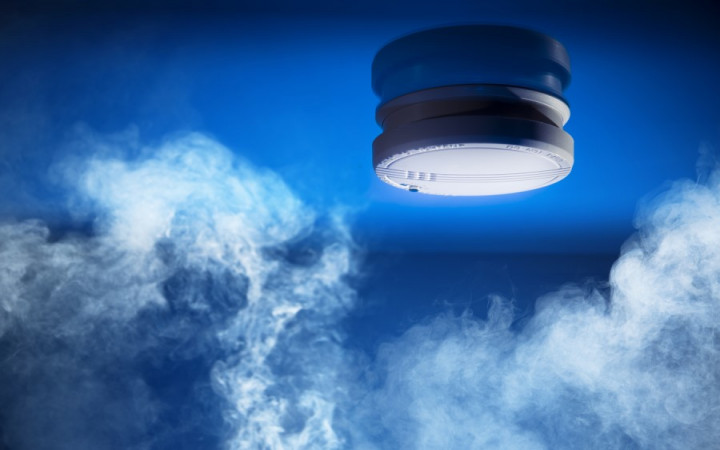Today’s Wonder of the Day was inspired by Emma. Emma Wonders, “Why does a smoking oven set of a fire alarm and not a smoking candle” Thanks for WONDERing with us, Emma!
So there you are in the kitchen, just minding your own business and frying up some of your favorite food: bacon! You get distracted playing a game on your smartphone and, before you know it, a tell-tale “Beep! Beep! Beep!" resounds throughout the house.
What is it? The smoke detector, of course! Your burning bacon created smoke that set off the smoke detector, causing it to sound an alarm. In addition to attempting to salvage what's left of your bacon, you'll also likely be waving a dish towel madly in front of the smoke detector to get it to quiet down.
Smoke detectors in homes are WONDERful, life-saving devices. When technological advancements made it possible for nearly everyone to afford smoke detectors for their homes in the late 1970s, annual fatalities from home fires were reduced by almost half.
All smoke detectors consist of just two basic parts: a sensor to detect smoke and a loud horn to alert people to the presence of smoke. Most smoke detectors operate using either a 9-volt battery or 120-volt electrical house current.
There are two main types of smoke detector sensors. Photoelectric detectors use beams of light or low-powered lasers. In the event of a fire that generates sufficient smoke, these light beams would be blocked, triggering an alarm. Photoelectric detectors tend to be larger and aren't very sensitive.
Ionization detectors, on the other hand, are what exist in over 90% of homes today. Instead of light beams, they use an ionization chamber and a source of ionizing radiation to detect smoke. Compared to photoelectric detectors, ionization detectors are much more sensitive, smaller, and cheaper. As a result, they're also much more common in homes.
Inside a typical ionization detector, you'll find a tiny amount (about 1/5000th of a gram) of americium-241, a radioactive element that's a good source of alpha particles. These particles ionize the air inside the ionization chamber, creating a weak electrical current between the two plates inside the ionization chamber. Smoke — even a tiny amount — will disrupt this weak electrical current, causing the ionization detector to sound its alarm.
A Swiss physicist, Ernst Meili, first developed an ionization chamber in 1939. His device was designed to detect combustible gases in mines. Eventually, he also developed a cold-cathode tube that could amplify the weak signal generated by his detection mechanism to the point where it would activate an alarm.
Meili's device led to the development of ionization chamber smoke detectors. At first, though, they were very expensive and usually only used in factories and public buildings. Over time, however, technological advancements reduced the cost of smoke detectors by over 80%, leading to their use in millions of homes.




